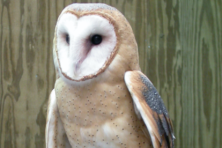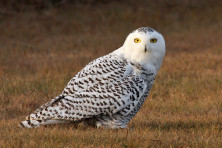State News: Hemp, Snowy Owls, Dairy Cows
- Share
- Tweet
- Pin
- Share
Hemp Industry Faces Unknowns Heading Into 2018
As Wisconsin farmers start planning for next year’s growing season, industrial hemp is an option for the first time since lawmakers lifted a ban on the crop in November. But even if farmers are interested in growing hemp, it may not be as simple as planting and harvesting it for most producers next year.
“Before we plant it, we’ve got to have a market for it,” said Adam Kuzcer, a farmer who is interested in growing hemp on his farm near Pulaski.
Kuzcer, who is also on the board of directors for the Wisconsin Farm Bureau, said farmers need to have a contract before growing hemp because they can’t count on selling their crop to the closest grain elevator. At least not in 2018.
“If it starts to be a bigger crop, we can develop more infrastructure. But this first year is definitely going to be experimental,” Kuzcer said.
Despite this uncertainty, Ken Anderson, president of the seed company Legacy Hemp, estimates 50 farmers will grow hemp in Wisconsin in 2018.
Anderson said growing hemp is similar to other popular grains and requires the same equipment.
“The difference is it’s profitable,” Anderson said. “A crop that is not subsidized and profitable, that is kind of an American agriculture anomaly.”
Anderson said his company plans to build a processing facility in the state next year.
The state Department of Agriculture, Trade and Consumer Protection has until March to put in place regulations for the hemp industry.
Dairy Cow Slaughters Increase as Farmers Focus on Profitability
The number of dairy cows sent to slaughter in the United States was slightly higher in 2017, according to the latest report from the U.S. Department of Agriculture. From January to November last year, about four percent more dairy cows were slaughtered than in 2016.
Farmers decide to cull a cow, or send it to slaughter, when it’s no longer profitable to continue milking. After several years of low milk prices, many farmers in Wisconsin say they’re evaluating their herds.
“Farmers are starting to feel the pinch a little bit and trying to make ends meet,” said Katy Schultz, a dairy producer near Fox Lake. “Sometimes culling those tail-end cows that you thought maybe you could hold over for a while might mean the difference between making a payment that month and not.”
While replacing a cow is an extra expense, Schultz said replacement heifers often have fewer health issues and better genetics for the future of the herd. “At least on our farm, we find that we would rather have a young fresh heifer than try to hold over an OK cow,” Schultz said.
Higher slaughter numbers are likely to continue in 2018, according to Mark Stephenson, director of dairy policy analysis at the University of Wisconsin-Madison.
Drivers Could Face Fines for Warming Unattended Vehicles Despite the frigid weather, police in some Wisconsin cities are warning drivers they could be fined for letting their cars warm up unless they’re sitting inside them.
Since 1972 it’s been illegal to warm up your vehicle in Eau Claire while it’s unattended. And if your car is stolen as a result, you’re likely to get a fine of more than $200 from the city.
In October, two vehicles were stolen in Eau Claire after being left running while unattended, and in both cases the owners were cited.
Madison, Milwaukee, Chippewa Falls and La Crosse have similar ordinances that prohibit drivers from warming unattended vehicles or leaving keys in unattended cars.
Snowy Owls Cause Concern Among Pilots
Snowy owls are native to the Arctic but have been moving further south in recent years. The white predators like to hang out at airports because the terrain reminds them of their home: with few trees and a good view of prey. But the birds don’t always mix well with populated areas.
Peter Moll, director of Oshkosh’s Wittman Regional Airport, said the owls risk getting killed if they get sucked into a plane’s engine. That scenario also poses a risk to both pilots and passengers.
“We had an incident several years ago where an aircraft hit a snowy owl on landing and it did about $300,000 damage to the airplane,” Moll said.
In November a pilot saw a snowy owl on the Wittman tarmac and reported it to the control tower. In response, an airport employee shot and killed the owl.
That action caught the attention of the Winnebago Audubon Society. Janet Wissink, president of the organization, said the group is working to educate airport employees about snowy owls.
“Owls aren’t afraid of humans because they live in the arctic and gunshots don’t scare them either,” Wissink said.
Wissink explained that the influx in snowy owls in the northern United States is because of an “irruption” in their population, meaning the birds have had a good breeding season and the young need to find new hunting territory to the south.
Wisconsin Public Radio, © Copyright 2018, Board of Regents of the University of Wisconsin System and Wisconsin Educational Communications Board.



